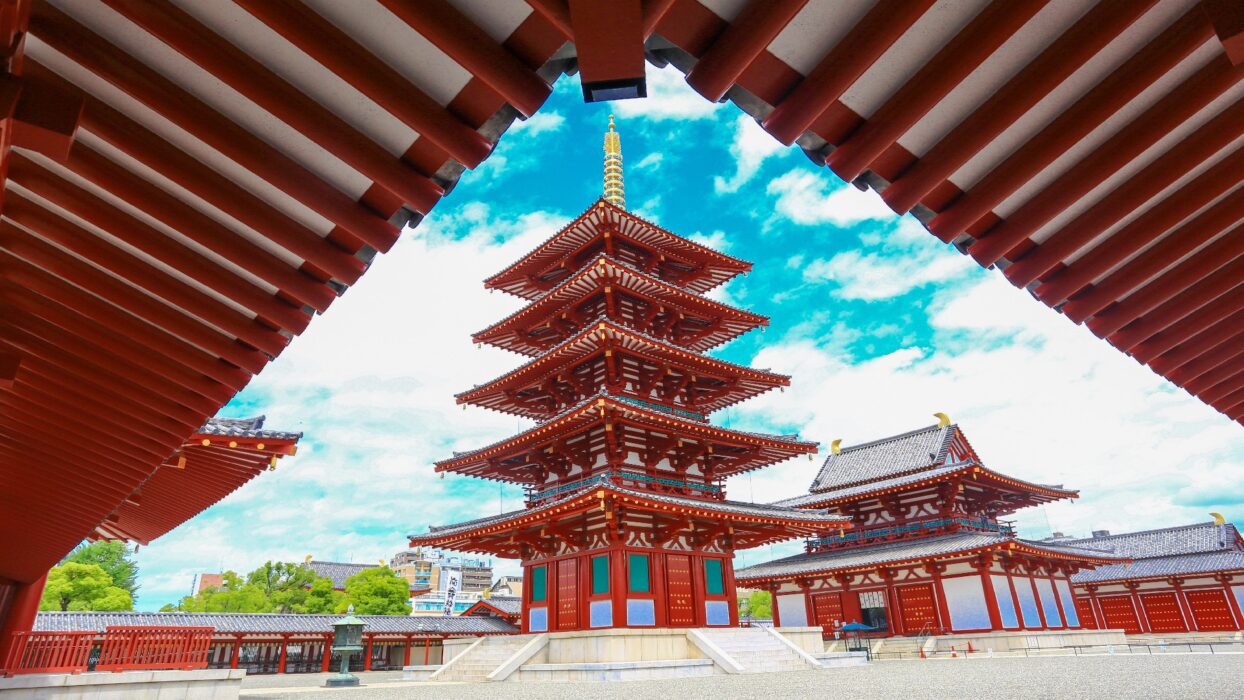Introduction
Welcome to Kyoto, a city that feels like a living museum, where ancient traditions blend seamlessly with modern life. While many travelers flock to its famous temples and bustling streets, there’s a treasure trove of hidden cultural landmarks waiting to be discovered. Imagine wandering through serene gardens, exploring quiet temples, and uncovering stories that have shaped this enchanting city over centuries. In this guide, we’ll take you on a fun treasure hunt through time, revealing the lesser-known gems that make Kyoto a cultural wonderland.
Discovering Kyoto’s Hidden Gems: A Cultural Adventure
What exactly makes a hidden gem in Kyoto? These are the spots that often escape the attention of the average tourist, yet they hold immense cultural significance and charm. Think of lesser-known temples, tranquil gardens, and unique attractions that showcase the city’s rich heritage. For instance, Honen-in is a delightful temple tucked away in the hills, surrounded by lush greenery and a peaceful atmosphere that invites reflection. Just a short stroll from the bustling streets, it offers a respite from the crowds, allowing you to connect with the spiritual essence of Kyoto.
Another hidden treasure is Otagi Nenbutsu-ji, a quirky temple adorned with over 1,200 stone statues, each with its own personality. This site is a delightful surprise for those willing to wander off the beaten path. These lesser-known Kyoto landmarks are not just places to visit; they are experiences that enrich your understanding of the city’s history and culture.
Ready to explore? Check out our guide on Hidden Cultural Spots in Kyoto for more insights!
Off the Beaten Path: Secret Spots in Kyoto
If you’re looking for unique attractions that tourists often overlook, Kyoto has plenty to offer. Imagine wandering through hidden temples, discovering tranquil gardens, and soaking in the atmosphere of secret spots that tell the story of the city’s past. One such gem is Shoren-in Temple, known for its stunning gardens and serene ambiance. Here, you can enjoy a moment of tranquility while sipping matcha tea and listening to the rustle of leaves.
Another must-see is the Philosopher’s Path, a charming canal-side walkway lined with cherry blossom trees. This picturesque trail is perfect for a leisurely stroll, and you’ll find plenty of hidden cafes and art galleries along the way. To truly engage with local traditions, consider visiting during the quieter seasons, when you can experience these spots without the hustle and bustle of peak tourist times.
For more unique attractions, check out our list of 10 Must-See Hidden Gems in Kyoto!
A Day in Kyoto: Detailed Itinerary for Treasure Hunters
Imagine a day dedicated to uncovering the hidden cultural treasures of Kyoto. Start your morning with a visit to Honen-in, where the peaceful surroundings will set the perfect tone for your adventure. After soaking in the serene atmosphere, head to Otagi Nenbutsu-ji to marvel at the whimsical stone statues. Don’t forget your camera—each statue has its own character, making for some fantastic photos!
As you explore, take a break at a local tea house to enjoy some traditional Kyoto sweets. After recharging, make your way to Shoren-in Temple, where you can wander through beautifully manicured gardens. In the afternoon, stroll along the Philosopher’s Path, stopping at art galleries and quaint shops that reflect the local culture.
By the time the sun sets, you’ll have gathered stories and memories that will stay with you long after your visit. For a more comprehensive itinerary, don’t miss our guide on Top Activities and Hidden Gems in Kyoto.
Historical Context and Folklore: Stories Behind the Landmarks
Every corner of Kyoto tells a story, and the hidden cultural landmarks are no exception. Take Honen-in, for instance. This temple isn’t just a peaceful retreat; it’s steeped in the tales of the Pure Land Buddhism movement. Founded in the 12th century, it was a place of contemplation for monks seeking enlightenment. As you walk through its serene gardens, you might feel the echoes of prayers and meditations that have filled the air for centuries.
Then there’s Otagi Nenbutsu-ji, where the whimsical stone statues each carry a unique backstory. Legend has it that these statues were created by a single monk who, through sheer determination and creativity, brought them to life with their quirky expressions. Each statue represents a different aspect of the human experience, from joy to sorrow, making this temple a delightful exploration of human emotion.
As you stroll along the Philosopher’s Path, you’ll find yourself walking in the footsteps of famous philosophers like Nishida Kitaro, who pondered life’s mysteries here. The cherry blossoms that bloom in spring add an enchanting touch, making this path a living canvas of nature and thought. Don’t forget to pause and reflect on the stories that these landmarks hold; they are a significant part of Kyoto’s rich tapestry of history and culture.
For more on the fascinating history of these sites, check out our guide on Explore Kyoto’s Rich History.
Culinary Delights: Tasting Kyoto’s Local Flavors
No cultural treasure hunt is complete without savoring the local cuisine, and Kyoto’s culinary scene is as rich as its history. Near Honen-in, you’ll find charming tea houses where you can indulge in matcha—a finely powdered green tea that’s a staple in Kyoto. Pair it with some wagashi, traditional Japanese sweets, and you have a delightful snack that embodies the essence of Kyoto’s culinary artistry.
After visiting Otagi Nenbutsu-ji, why not stop by a local market? The Nishiki Market is a feast for the senses, where you can sample everything from pickled vegetables to fresh sushi. The vibrant atmosphere and the tantalizing aromas will draw you in, making it a perfect spot to grab a bite while mingling with locals.
For a unique dining experience, seek out a kaiseki restaurant. This traditional multi-course meal showcases seasonal ingredients and artistic presentation, reflecting Kyoto’s cultural heritage. Reservations are often required, so plan ahead to ensure your spot at one of these culinary gems.
Ready to discover more about Kyoto’s food scene? Check out our guide on Quirky Activities in Kyoto for some tasty insights!
Festivals and Events: Celebrating Kyoto’s Cultural Heritage
Kyoto is a city that knows how to celebrate its culture, and the festivals here are a vibrant testament to that. The Gion Matsuri, held every July, is one of the most famous festivals in Japan. It features stunning floats, traditional clothing, and a sense of community that brings locals and visitors together. The festival’s roots date back to the 9th century, originally held to appease the gods during a plague.
As you wander through the streets during this time, you’ll find yourself swept up in the excitement, with food stalls offering delicious treats and locals dressed in beautiful yukatas. Don’t miss the chance to participate in the festivities; it’s a wonderful way to connect with Kyoto’s rich traditions.
Another fantastic event is the Hanami season, where locals gather to celebrate the blooming of cherry blossoms. Parks like Maruyama Park come alive with picnics, laughter, and the beauty of nature. Join in the fun and enjoy a relaxing day under the blossoms, soaking in the beauty of the moment.
For a full calendar of events, explore our guide on Famous Temples of Kyoto to plan your visit around these vibrant celebrations!
Practical Travel Tips: Making the Most of Your Visit
Before you set off on your treasure hunt through Kyoto, here are some practical tips to enhance your experience. Start by purchasing a Kyoto City Bus & Kyoto Bus One-Day Card, which will allow you to hop on and off public transportation easily. This is especially handy for reaching those hidden gems that may be tucked away from the main tourist routes.
When visiting temples, be mindful of the local customs. Dress modestly, and remember to be respectful of the sacred spaces. Many temples have specific visiting hours, so check ahead to avoid disappointment. Also, consider visiting during weekdays or early mornings to enjoy these spots with fewer crowds.
Lastly, don’t forget to bring a portable charger for your devices. With so many photo opportunities and cultural experiences, you’ll want to capture every moment without worrying about battery life!
For more tips on exploring Kyoto, check out our ultimate travel guide at Ultimate Travel Guide to Kyoto.
Outdoor Activities: Exploring Kyoto’s Natural Beauty
Kyoto isn’t just about culture; it’s also a nature lover’s paradise! After visiting Shoren-in Temple and soaking in its gardens, why not explore the nearby Arashiyama Bamboo Grove? Walking through this enchanting forest is like stepping into another world. The towering bamboo stalks sway gently in the breeze, creating a serene atmosphere that’s perfect for reflection or photography.
If you’re feeling adventurous, consider hiking up Fushimi Inari Taisha. Famous for its thousands of vermillion torii gates, this hike offers breathtaking views of the city and a chance to connect with the spiritual side of Kyoto. The trail can be steep, but the experience is undeniably rewarding.
For those who prefer a leisurely pace, take a stroll along the Kamo River. The riverside paths are lined with cherry blossom trees, making it a picturesque spot for a walk or a bike ride. You might even catch a glimpse of locals fishing or enjoying a picnic by the water.
For more outdoor adventures, don’t miss our guide on Kyoto Sightseeing: Historic Attractions!
Shopping for Local Crafts: Souvenirs with a Story
As you explore Kyoto, take the time to hunt for unique souvenirs that reflect the city’s rich cultural heritage. The Gion District is a fantastic place to start, with its quaint shops offering traditional crafts like kyo-yaki (Kyoto ceramics) and kyo-yaki textiles. These handmade items carry the spirit of Kyoto and make for wonderful keepsakes.
Don’t miss the Kyoto Handicraft Center, where you can watch artisans at work and even try your hand at crafting your own souvenir. From pottery to fabric dyeing, this is a great way to immerse yourself in local traditions while creating something special to take home.
For a more extensive shopping experience, visit the Nishiki Market again, where you can find not just food, but also local crafts and unique gifts that showcase Kyoto’s artistry. From beautiful fans to exquisite tea sets, there’s no shortage of treasures to discover!
Looking for more tips on local crafts? Check out our shopping guide on 10 Must-See Hidden Gems in Kyoto.
Seasonal Travel Insights: Best Times to Visit Hidden Landmarks
Planning your visit around the changing seasons can significantly enhance your experience in Kyoto. Spring, with its cherry blossoms, is undoubtedly a magical time to explore. The Philosopher’s Path transforms into a stunning corridor of pink and white blooms, creating a picturesque backdrop for your adventures.
Fall is equally enchanting, as the leaves turn vibrant shades of red and gold. Visiting temples like Kinkaku-ji (the Golden Pavilion) during this time is a treat, as the reflections in the surrounding pond create a stunning visual display.
Summer brings lively festivals, while winter offers a quieter charm, with fewer tourists and the chance to see temples dusted with snow. Each season has its unique allure, making it worthwhile to plan your trip accordingly.
For more insights on seasonal highlights, explore our guide on Discovering the Charm of Kyoto.
Commonly Asked Questions (FAQs) About Hidden Cultural Landmarks
Curious travelers often have questions about exploring Kyoto’s hidden cultural landmarks. Here are some common queries:
- What are some lesser-known temples to visit? Honen-in and Otagi Nenbutsu-ji are fantastic options that offer a peaceful experience away from the crowds.
- Is it easy to get around Kyoto? Yes! Public transportation is efficient, and many hidden gems are accessible by bus or bicycle.
- What’s the best time to visit Kyoto? Spring and fall are especially beautiful, but each season has its charm, so choose based on your preferences!
For more answers to your questions, check out our guide on 10 Unique Things to See Beyond the Crowds.
Fun Facts About Kyoto: Quirky Tidbits to Share
Did you know that Kyoto was the capital of Japan for over a thousand years? This rich history has left an indelible mark on the city’s culture and architecture. Here are some fun facts to impress your friends:
- Kyoto is home to over 1,600 temples and 400 shrines, making it a treasure trove for culture enthusiasts!
- The city is famous for its traditional tea ceremonies, which date back to the 12th century.
- Kyoto is known for its kaiseki cuisine, a multi-course meal that reflects the seasons and artistry of Japanese cooking.
For more quirky insights, check out our guide on Discover Kyoto’s Famous Temples.
Sustainability and Conservation Focus: Preserving Kyoto’s Heritage
As you enjoy the beauty of Kyoto, it’s essential to consider sustainability. The city is actively working to preserve its cultural landmarks and natural beauty for future generations. Many temples and gardens are implementing eco-friendly practices, such as using organic gardening methods and promoting local artisans.
Travelers can contribute by being mindful of their impact. Consider using public transportation, supporting local businesses, and participating in conservation efforts. By doing so, you’ll help ensure that Kyoto remains a cultural gem for years to come.
For more on how to travel responsibly, check out our guide on Discover Kyoto’s Hidden Gems.



















